Palau, a relatively unknown island nation in Micronesia, was the first stop on our 3 month trip after leaving South Korea. Though many may scratch their head when asked about Palau, those who’ve heard of Palau likely associate it with its stunning scenery, gorgeous underwater landscape, and WWII history.
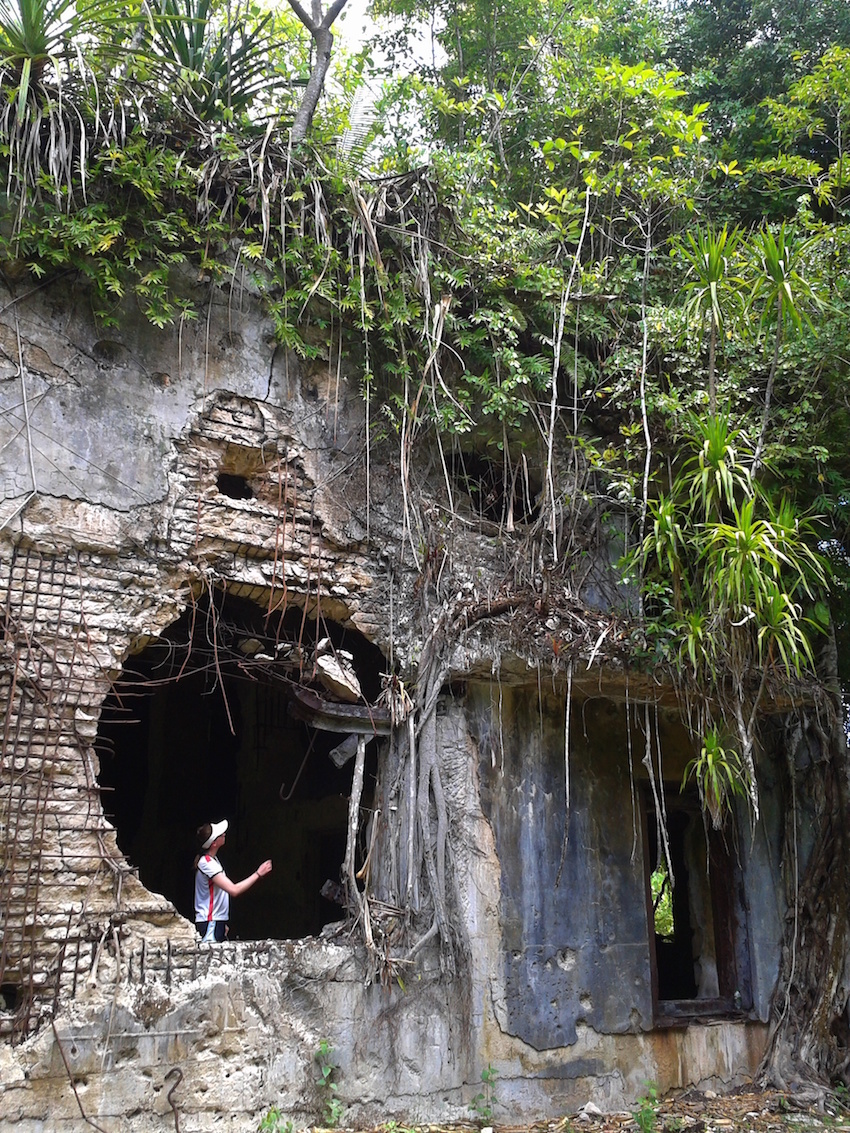
If you haven’t heard of it, you’ll probably want to hop on a plane and get there after reading this article!
So, here we go:
You can swim in a lake full of jellyfish and live to tell the tale.
Likely, if you’ve ever read anything about Palau, it’s about the famous Jellyfish Lake.
Normally, you’d probably think I was crazy if I told you I survived after a dip in a lake full of a million little gold jellyfish. After all, aren’t jellyfish supposed to sting? Well, it turns this these little guys have lost their sting (or at least it’s too weak to hurt humans) due to the absence of predators in the lake.
It’s truly an once-in-a-lifetime experience to spend an hour snorkeling amongst these gently pulsating golden jellies. Just be careful when you swim so as not to harm them and don’t be like some tourists who have tried to take them back to the hotel to eat for dinner (true story).
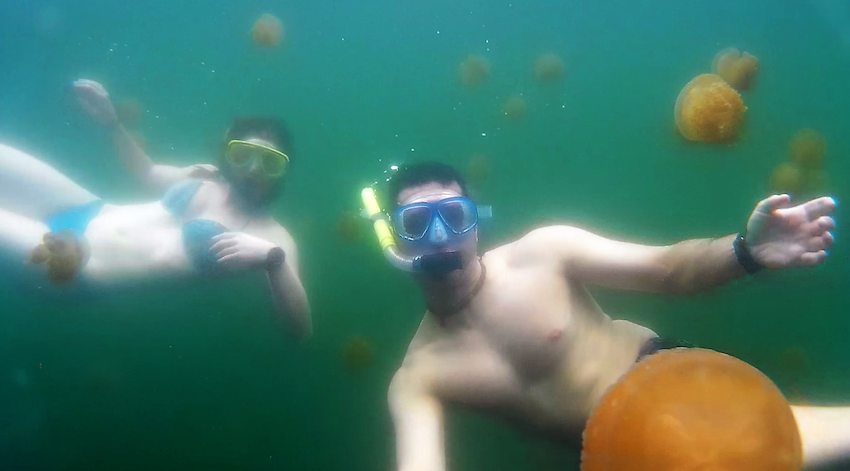
The how-to: As this place is impossible to get to on your own, you’ll definitely have to go with a tour. While the prices may seem steep (the cost of the government permit plus the tour), I found the cost to be completely worth it.
In regards to tour companies, I’d highly recommend Impac as their prices are below that of the competition and our English-speaking guide, Grant, was just great. They have several variations of the tour but our favorite was the Jellyfish Lake and Rock Island Kayaking Tour. You can contact them here.
You can see the incredible, UNESCO protected Rock Islands.
This collection of 445 volcanic islands is the pride of Palau. Though mostly uninhabited, the pristine beaches, sheer cliffs, and brilliant turquoise water filled to the brim with marine life make these islands one of Palau’s top attractions. This area is also home to the Jellyfish Lake, the “Milky Way,” as well as some of Palau’s best diving.
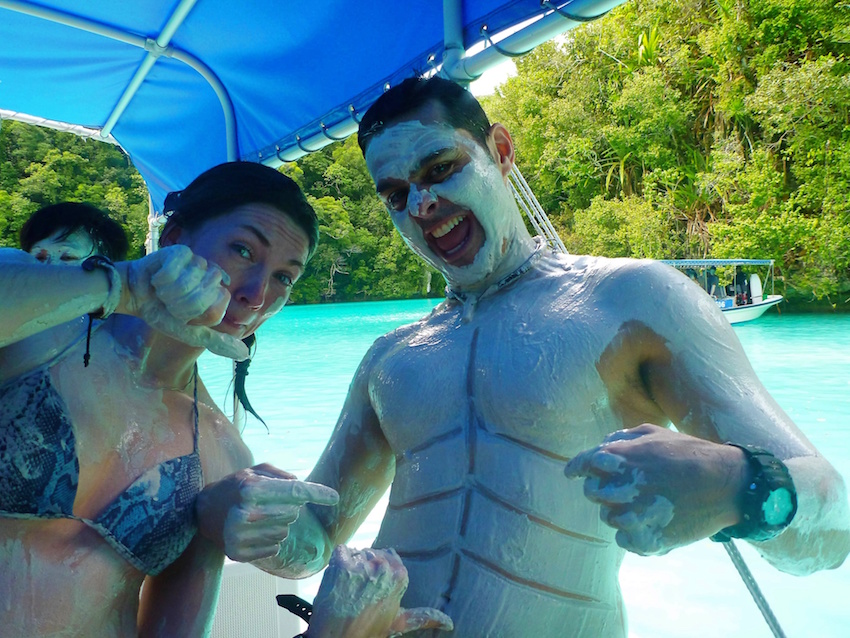

The how-to: Basically, you’ll run into these islands anytime you do something involving Palau’s water. Likely, you’ll pass through them if you are going somewhere to dive as well or taking the state ferry from Koror to Peleliu (which I highly recommend you do).
Naturally, there are also plenty of tour companies offering tours to the area. Instead of just sitting on a boat and watching the Rock Islands sail by, I very much recommend a kayak tour of the Rock Islands. Once again, I’ll recommend the Jellyfish Lake and Rock Islands Kayak Tour from Impac that’ll allow you to visit both sites in a single day.
You can dive in a world-renowned destination.
Now, I’m not a diver myself but Palau is an oft dreamed about place for divers. Though the diving is a bit on the expensive side, it’ll give you a chance to see some beautifully vibrant coral, turtles, sharks, and even the occasional manta ray.
The how-to: As expected, there’s plenty of diving companies to choose from on the island. Count on spending around $180 or more for 3 tanks + lunch + a full day’s gear rental.
Safety tip: Unfortunately, there’s a number of “sketchy” dive shops in Palau that don’t have very safe diving practices (as you can see in this horrible security stop video below filmed in Palau). To avoid this, remember that cheaper isn’t always better and be sure you check the reviews online before arrival (especially because internet in Palau is very slow!).
Final note: If you’re are a diver and are interested in becoming a Divemaster Trainee and work around the world, we wrote the perfect article for you here: https://outofyourcomfortzone.net/divemaster-internship/
You can meet the wonderfully friendly Palauans.
While Palau is usually praised for its underwater attractions, the people of Palau are what made our trip so memorable. They are always ready to strike up a conversation or offer you a ride. Since no public transportation exists on the island, the latter is really helpful!
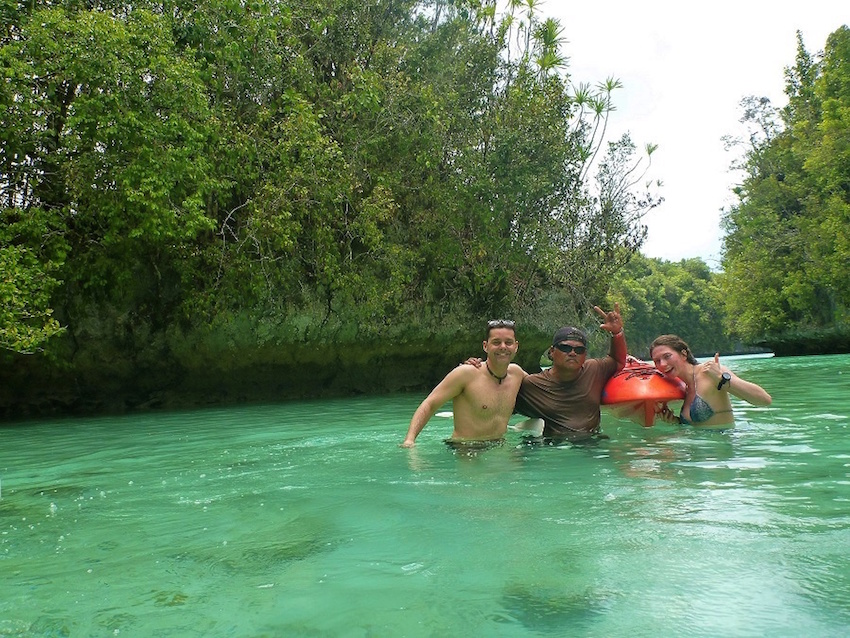
The how-to: Just stand around and look foreign (for the conversation) or walk along the street looking tired (for the ride).
You can witness some of Palau’s centuries old traditions.
Although tourism has been growing fairly rapidly on this little gem of an island, Palau hasn’t abandoned its traditions. For one, although everyone speaks completely fluent English, you’ll notice that the locals almost always speak in Palauan to one another.
Additionally, while the weddings and the funerals are often very traditional, the most revered tradition of all is the First-Born Ceremony. This ceremony, meant to honor new mothers after the birth of their first child, occurs after the new mother undergoes several days of private cleansing. Afterwards, during the ceremony itself, the mother presents herself and her new baby to an audience of friends and family wearing a traditional grass skirt and covered in fragrant oils.
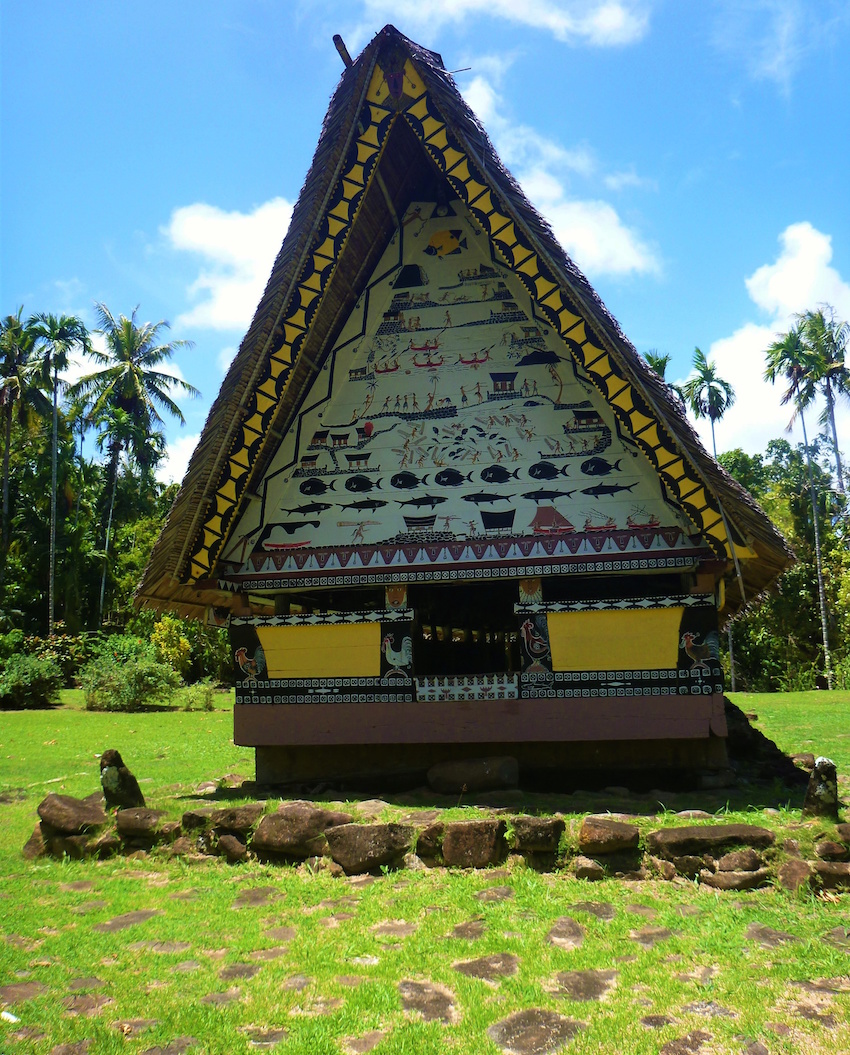
The how-to: Make friends with the locals (which you’ll know is easy from #4) and ask around.
You can visit the well-preserved WWII relics on the island of Peleliu.
Peleliu, a small island 40 km (25 mi) south of Koror (Palau’s main island), was the site of one of the bloodiest battles of the Pacific during WWII, leaving behind thousands of casualties. Initially occupied by the Japanese, the Americans invaded the island expecting to have full control within 3 days only to end up fighting for nearly 3 months.
The marks of the war are all over the island and have been left virtually untouched since the end of the battle. Throughout the island you’ll find caves that were used by the Japanese, bombed-out buildings, partially destroyed tanks, abandoned fighter jets, and plenty more. If you’d like to know more about the battle, click here: https://www.history.com/topics/world-war-ii/battle-of-peleliu

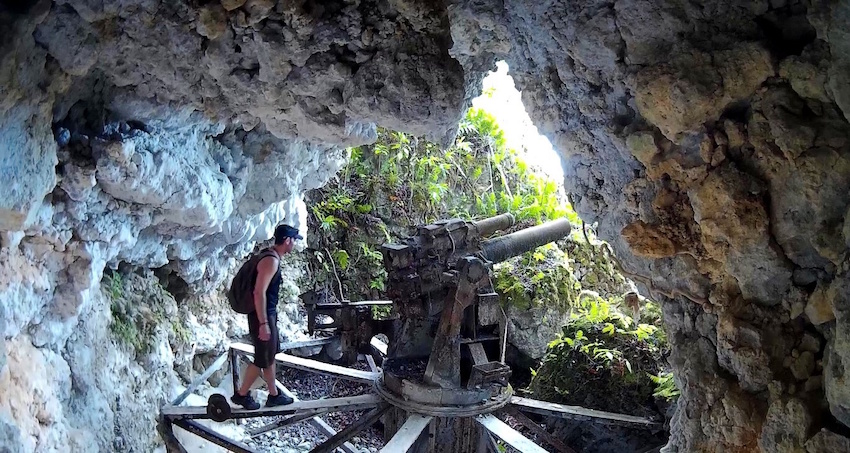
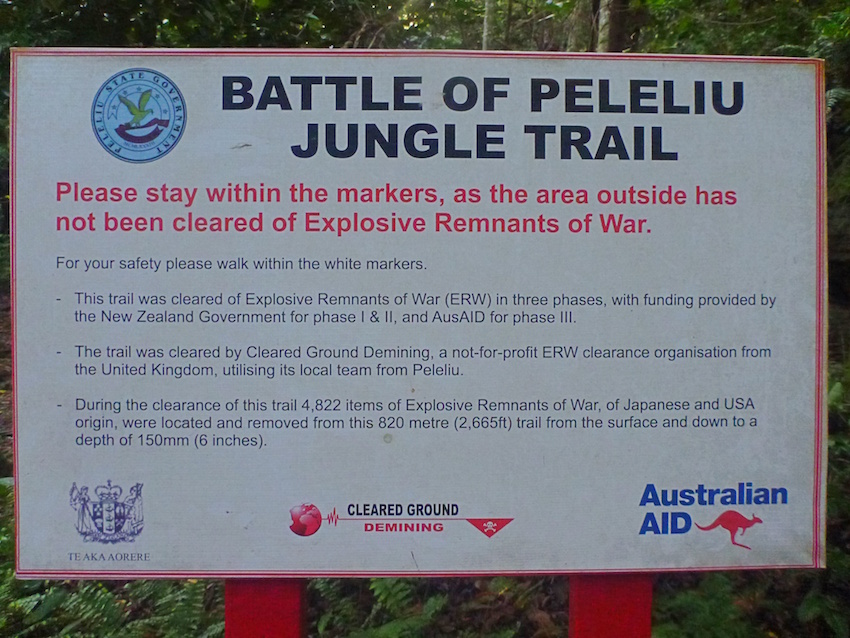
The how-to: If you’re short on time, you can do a fairly expensive day-trip with a tour company leaving from Koror. If you have more time, I highly recommend you get there on your own via the state ferry, stay a few days, and then rent a bike or find a local guide to see the sights.
*NOTE* As of now, the island has NOT been completely cleared of mines and explosives so please do NOT wander off the trails and pay attention to signs.
You can visit the monkeys on Angaur Island.
This tiny isolated island, with a population of just 130 , features even more relics from the Second World War (though most of the fighting took place on Peleliu), a laid-back atmosphere, and monkeys (which can be found nowhere else on Palau!).
Strangely enough, the Germans are actually the ones who put the monkeys there. In the early 1900s, the Germans began mining operations to extract the island’s rich phosphate reserves. Unsure of whether or not the fumes coming from the mines would be toxic to humans, they put monkeys there for a little experiment to test the air quality. More than a hundred years later, apparently the air was okay and the monkeys remain.

The how-to: Unfortunately, I’m sad to report that no matter how hard we tried, we just couldn’t find a way to get to this little island just 12 km (7 mi) south of Peleliu. The state ferries run incredibly infrequently and, because we didn’t have the money to either charter a private boat ($300+) or fly ($75… assuming the flights are even running), we found it impossible to get there. We naively hoped that once on Peleliu we’d be able to find someone who would be willing to take us there for a small fee. Though the distance between the two islands is small, the sea gets very rough. If you do manage to find a cheap way to get there, please let us know!
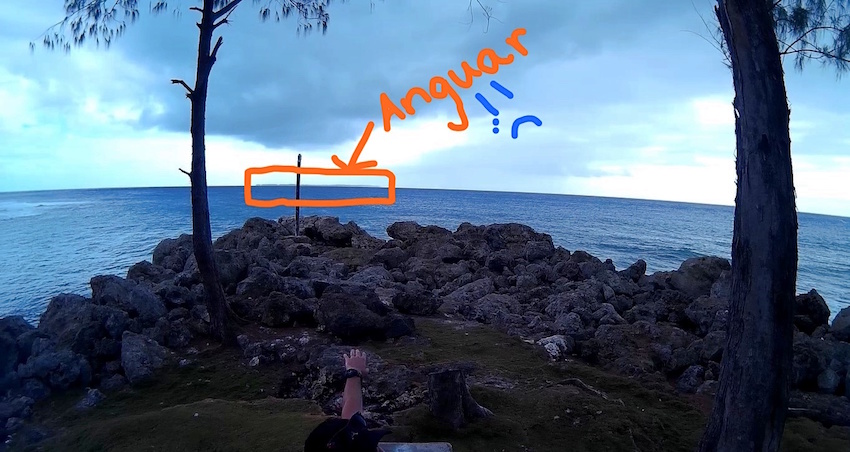
So, have we convinced you? Are you ready to hop on a plane yet? If you need a bit more convincing, here it is:
Palau isn’t nearly as expensive as you think it is.
Palau may seem like one of those destinations that, if you are like us and travel budget-style, may always seem out of your reach. However, we are happy to report that it IS possible to visit Palau (relatively) cheaply… it just takes some planning ahead. While the activities on the water will obviously cost you (though I think the prices are completely worth it), you can definitely save on things like accommodation, food, travel insurance and transportation.

The how-to: take a look at our Ultimate Guide to Visiting Palau on a Budget
Tours, activities and excursions in Palau
To search for tours and tours in Palau, I recommend taking a look at GetYourGuide and Viator. These sites constantly advertise some promotion, in addition they have a very nice variety of activities.
Viator
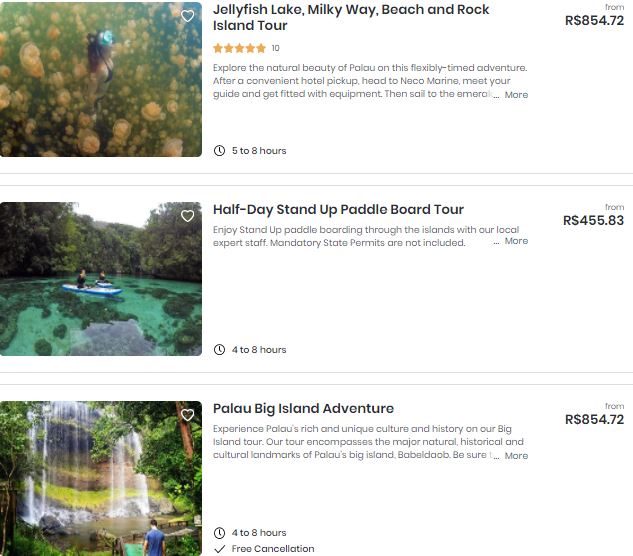
2017 UPDATE: When we first wrote this article, we wrote about Palau’s most populous islands – Koror, Babeldaob, Peleliu, and Angaur. But we left off Kayangel, a lovely yet relatively untouched island of pristine sandy beaches north of Koror.
We weren’t able to visit ourselves, but reader Bjorn (who did visit) has been kind enough to do a full write-up for us of how to visit Kayangel. You can find his comment below. Thanks, Bjorn!
Have you been to Palau yourself? Would you like to visit it? Do you have any other tips or questions for us? Be sure to leave us your comments and questions below!


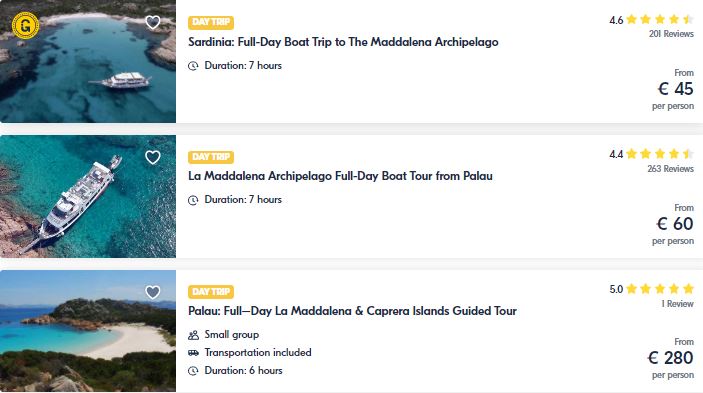

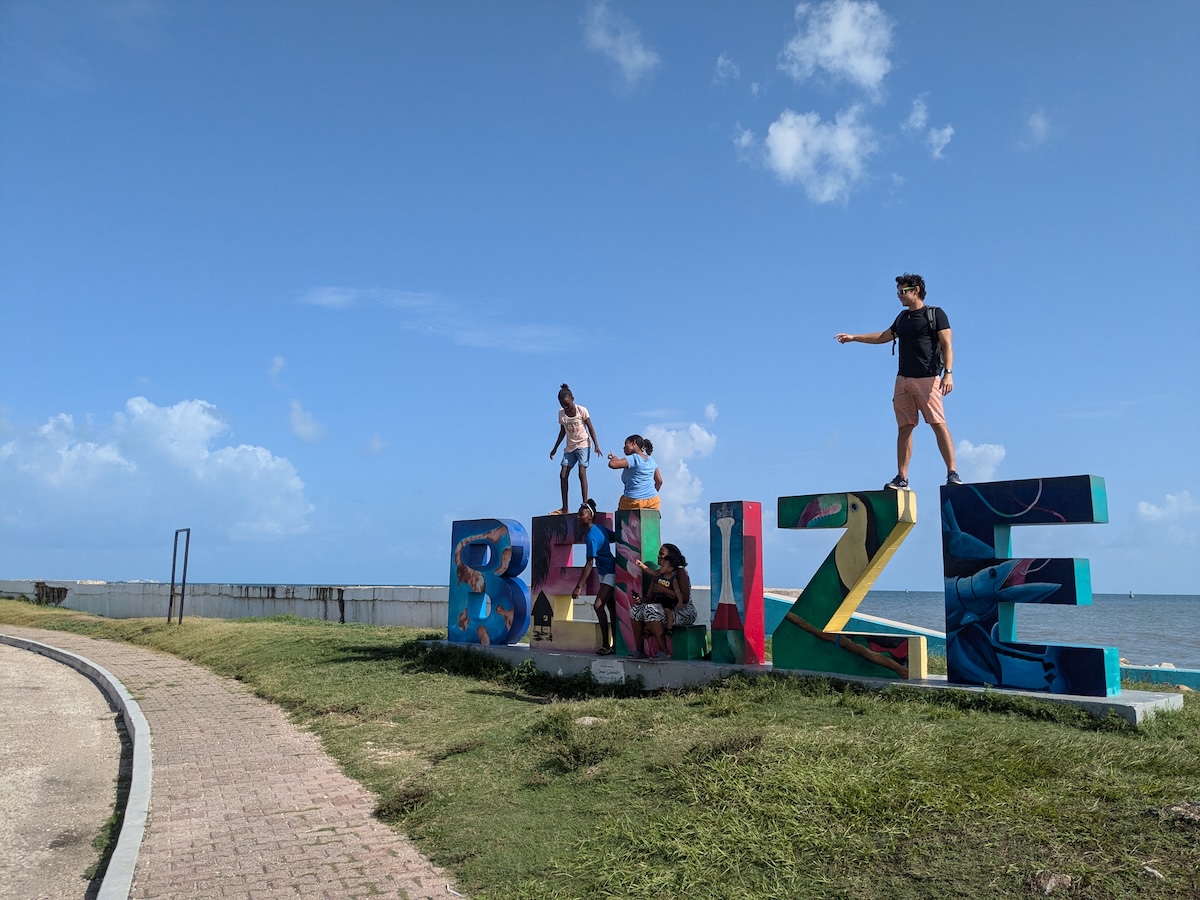
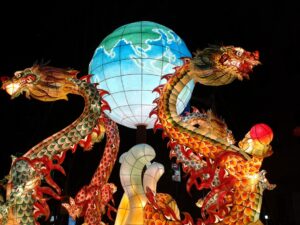

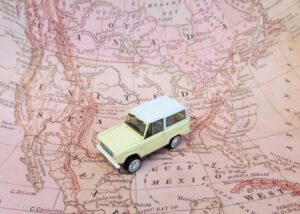
18 Responses
Sadly, Jellyfish Lake nowadays is almost devoid of jellyfish although some tour operators still go there. The reason seems to be a change in the lake’s salinity. While some people blame “El Nino” and rising water temperatures others think it was the mass influx of tourists – and therefore sun cream, after shave, body lotion, anti-biotics, shampoo and conditioner etc. Read more about it here:
https://palaudiveadventures.com/palau-jellyfish-lake/
Hi again Bjorn,
Wow, thanks for letting us know….I’m sad to hear that, though. Visiting the lake was definitely one of our favorite memories from Palau!
They had talked about some issues with the jellyfish population going down when we were there, but I hadn’t realized that they were actually completely gone now. There were still a ton of them when we were there just a year and a half ago. Did you still go and then find out the hard way that they were gone? Or did you know beforehand?
I guess the causes could very well be a combination of all you mentioned above. It’s also situations like this where the issue of mass tourism comes into play. When you have incredible places like this, naturally people want to see it (as we did) and other people want to profit from it (like those tour companies still bringing people to the lake). This makes it hard to find the balance between preservation and not shutting a place off from the world entirely.
Unfortunately, mass tourism is a pretty big issue around the world. Some places are trying to deal with it, though. Like Venice, which was literally sinking from all the visitors, is set to start limiting the number of tourists that can be in the city at once. And Thailand has closed a number of beaches after they were getting destroyed from too many tourists.
Hopefully, with time, Palau manages to figure out a system (for the issue of tourism and anything else contributing to the lake’s decline) to let the lake & the jellyfish recover.
Hello Nikki,
and sorry for the late reply. I learned of it beforehand so I did not try to visit Jellyfish Lake. Apparently, most operators don’t go there anymore, anyway. Unfortunately, the tourist revenues are a big factor in Palau’s budget and from what I have heard a proposal to close Jellyfish Lake was turned down by the (state?) governor.
No need to apologize Bjorn 🙂
Ah, well, I’m glad to hear that most operators aren’t taking people there anyway. That’d only make things worse, I’d imagine.
Huh, I hadn’t heard that about the governor, but with how important tourism revenue is, I guess I can kind of understand where he’s coming from. I guess we’ll just have to see how it all plays out….
How to visit Kayangel (as of Sept./Oct. 2017):
Kayangel is a sparsely populated atoll some 25 miles north of Babeldaob and an ideal place to get away from the Koror tourist crowds + it also has some sights. As the state boat travels only every other weekend (from T-dock) visiting Kayangel needs some planning. Normally, the boat leaves Friday at 09:00 and returns Sunday 13:00 giving you two nights there. It costs $40 return plus $8 for a sightseeing permit. The trip is a scenic one travelling up the Babeldaob coast and then over the reef and open water to Kayangel. As it’s an open speed boat do as the locals do and bring a rain jacket + wrap your backpack in plastic. Phone (4882766) or visit (near the hospital) the Kayangel state office to confirm the boat schedule, make a reservation and get information on accommodation. There are a limited number of accommodation options on Kayangel including bungalows for $75 north of the dock. The cheapest rooms are rented out by Mr. Lazarus for $50 and if you are adventurous or single he also has a tent which you can pitch right by the beach for $20. You may use his sea kayak for free and don’t forget to check out his giant clam farm. The lagoon is full of turtles and undoubtedly you will see plenty while kayaking, snorkelling or simply walking on the beach. He also owns property on one of the uninhabited southern islands where you can camp or sleep in the shack. Moreover, he is also a ranger and can arrange for a visit to the Ngeruangel conservation area (atoll) seven miles north. I don’ know how much the boat trip costs but there is a $15 + $8 (snorkelling) visitor fee. If you would like to stay longer than three days it might be possible to return to Koror with the daily tour group – ask Mr. Lazarus.
This is amazing. Thanks so much, Bjorn! I’ll make a note on the article now directing people to your comment in case they need it.
How to visit Peleliu (as of Sept./Oct. 2017)
Peleliu (some 25 miles south of Koror) with its various WW II relics shows the tourist a different side of Palau and a visit for some days is highly recommended. Check out the boat schedule (http://outofyourcomfortzone.net/all-the-schedules-and-prices-for-palaus-state-boat-between-koror-peleliu-and-angaur/) but call the state office (488-1817 or 345-2967) beforehand for any changes or additional sailings. There are two different boats and the ferry (on Tuesdays and Fridays) is regularly used to transport dangerous goods (typically fuel drums) when passengers might not be allowed.
There are accommodation options directly at the ferry dock or nearby in the village. The small bungalow at MAML Divers is still available (they have bikes, too) and if you don’t find it on Airbnb contact Mr.Takashi (palaudivers488@gmail.com) directly. I paid $25 but that might depend on the season. I found the small supermarkets quite well stocked and the only reason to bring food from Koror is if you want to save money. The (somewhat hidden) shop by the dock is open ‘til late and sells cheap beer and bento boxes.
The thing to do on Peleliu is to hire a bike (around $10) and explore the island. If you got the stamina ride your bike all the way around to the Ngermelt swimming hole on the eastern side. This tranquil place is ideal for lunch and a refreshing dip – take lots of drinking water. It’s also a good place to observe those wild chicken that you will see everywhere on the island. The Palau map from the Tourist Authority is a great way to get around but note that there are some sights that are not marked there:
– just inland from the dock (some 100 metres along the back road) you will find the wreck of an Australian Beechcraft in pretty good condition (on your right)
– you can find a Japanese bunker with cannon if you take the first dirt road on your right after the WW II museum down to the beach
– another bunker is situated on the road going north from the Japanese power plant (towards Bloody Nose Ridge)
– north of the turn-off to Bloody Nose Ridge you will find a rusting bull dozer and a pill box further on
– there is a rusting amphibious personnel carrier on the road connecting the modern solar power plant with the two American tanks
– along the short-cut between the southern dock and the turn-off for the WW II airplane graveyard you can find a DUKW in good condition (on your right).
Finally, two personal recommendations:
– Allow yourself lots of time for exploring Bloody Nose Ridge and follow all the turn-offs. There a numerous thing to see that can easily be missed if you are in a rush.
– Consider walking the quiet back road (“crocodile road”) along the eastern side of Bloody Nose Ridge and hitch a ride back to town after your sightseeing. It’s very scenic (save the rubbish dump) and with a bit of luck you might see a cockatoo.
Amazing comment as usual Bjorn!
I totally agree with what you said about renting a bicycle (ask at wherever you are staying if they have bicycles or know of a place you can rent) and making sure you give yourself enough time on Bloody Nose Ridge….I think we spent a good part of the day exploring just the ridge.
Just to add in a few more Peleliu recommendations:
*zoom in on this map here to see where some of the sites are (https://farm6.static.flickr.com/5084/5377599926_93646e0932_b.jpg)
*the cave complex (called the “1,000 man cave”) just down the road from the ferry dock and the MAML divers bungalow is definitely worth venturing through. Just make sure you bring a light!
*the abandoned airport runway is a pretty surreal/strange place to ride your bike along. A lot of the old WWII relics (abandoned tanks, bunkers, etc.) are around there anyway
*there’s also a small museum (called Peleliu WWII memorial museum) to visit. I don’t remember exactly where it is but I think it’s on the way to the airport….?
NOTE: if anyone reading this is going to Peleliu, remember that there’s still parts of Peleliu that have not been cleared of landmines. So, just be smart and stick to the paths and you’ll be fine 🙂
How to visit Angaur (as of Sept./Oct. 2017)
Angaur has become much more accessible since the state boat makes two roundtrips per week. Typically, departures from Koror (Malakal) are Mondays and Fridays at 12:00 p.m.. The trips from Angaur start Sundays at 12 p.m. and Thursdays at 10:00 a.m.. Always confirm departure times with the state office (488-5280) or visit them near the harbour on Malakal. The tariff is $20 per leg + $1 per bag. If you are lucky the boat (which is an open speed boat) will travel straight through the Rock Islands using the German Channel. It is also fairly easy to combine a trip to Angaur with Peleliu if you can manage to arrange a drop-off/pick-up at Peleliu’s South Dock. Obviously, this is easiest done if visiting Angaur first and then negotiate with the boat captain. Going the other way, contact Mr. Leon (see below) if he can arrange a pick-up for you. There is a constant flow of cars between Peleliu’s main village and the dock and if you can’t get a ride a paid lift will cost you $5.
There are few accommodation options on Angaur and I would recommend you contacted Mr. Leon (488-8299) before visiting the island. Among other places he has a lovely bungalow by the sea which he rents out for $40 (probably more during the high season). Besides, he also owns the shop and is very knowledgeable so don’t hesitate to ask him whatever you want to know about Angaur.
Unfortunately, the tourist office’s map is somewhat unclear when it comes to the north western part of Angaur, but seriously, it’s so small you can’t really get lost. The map shown further up on this site is more accurate. One thing you will notice if you come from Peleliu is the scarcity of wild chicken which are ubiquitous there. And wandering along Angaur’s roads you will soon find out the reason why – a rather healthy (or should I say unhealthy) population of monitor lizards, some of them quite big. Another species you will see aplenty are Angaur’s famous monkeys – save the immediate surroundings of Angaur town (where they are hunted) you will undoubtedly encounter lots of them.
As for the sights: there isn’t an awful lot left from WWII (save the airplane graveyard) but the remains from the colonial era’s phosphate mines are quite intriguing. You will undoubtedly notice the locos (and tanks) dumped at the harbour entrance but the other stuff is a bit harder to find. Walk slowly north from the harbour and take a sharp look out towards your right. Soon you will see one of the overgrown pylons of the former Phosphate conveyor belt. Walking further (east) into the jungle you will come to the massive ruins of the Japanese Phosphate processing plant (bringing a machete will help). Especially the huge drying cylinders are truly impressive and I found exploring the place highly interesting. If you want to know how all this looked during its day, visit the school near the runway and ask nicely to be shown the picture gallery in the school’s library. Other places worth seeing are the airplane graveyard, the abandoned lighthouse, the north western cape and the blow holes nearby.
One thing you should definitely bring to Angaur is a flashlight to walk the unlit streets during the evening.
What a great write-up, Bjorn. Makes me wish we were able to make it there!
I’ve actually just sent you a quick message with a question to the email you used to send the comment. Let me know if you don’t see it 🙂
Hi Nikki,
the museum is the structure marked “Japanese War Ruins” on the map and the beach I mentioned is “White Beach”. As shown on the map, it’s possible to visit White Beach and then return to the main road via another track further north. There is some debris on the beach but it’s very hard to recognize what it might have been or if it’s from WWII in the first place.
May I add two points to your main post:
1. In my humble opinion the cannon does indeed point towards the eastern beaches where the American invasion took place (see Bloody Beach further south).
2. There were no fighter jets (or jets at all) in the Pacific war theatre.
Ah, thanks for the catch about the fighter jets, Bjorn. When it comes to writing anything military-based, I should ask Rodrigo because that’s more his speciality than mine 🙂
I’ve adjusted it in the article.
these posts are just amazing, thanks so much for them! very helpful and encouraging. we’re in palau from dec 9-25, 2018 and we’ll be sure to read over everything here. so grateful.
Hey Mia — thanks so much for your comment! It was really hard to find info about Palau before our trip, so we’re glad we can help 🙂
Is there any fishing in Palau since it’s a Marine Sanctuary?
Hi Chris, sorry for the late reply. Your comment went to my spam box.
Yes, there is finishing in Palau. If you just google “fishing in Palau” you will find several local tour companies offering this service.
I hope I could help!
Enjoy Palau!
We have been to Palau with my wife March 2020, yes, Covid was already in)). We rented two kayaks with German guy, I don’t remember company name. We took water and food for a week and went out.
There’s 100$ we paid for local permit, which was actually never questioned.
Kayaking is easy, just understanding tides schedule and currents is vital. Underwater is amazing. No need scuba, just snorkeling. Camping on beaches is okay, just watch tides, save water and don’t leave your trash. There’s a lot of crabs and rats.
Price for kayaks was 90$ per day for two. We refused the guide, took the map which was useful.
Next time I plan to take my own bike and hammock and explore the island itself.
Stay safe, enjoy your life.
Hi Ilya – glad to hear you had a great time in Palau!
Very cool that you did the whole kayaking trip independently! Do you remember where exactly you spent your week kayaking? It might be nice for other readers to know 🙂